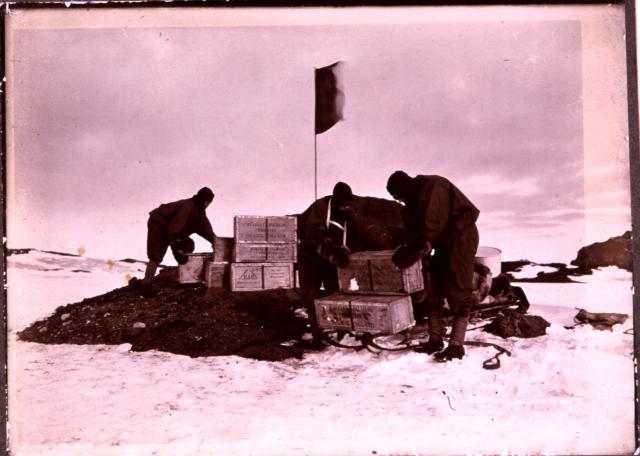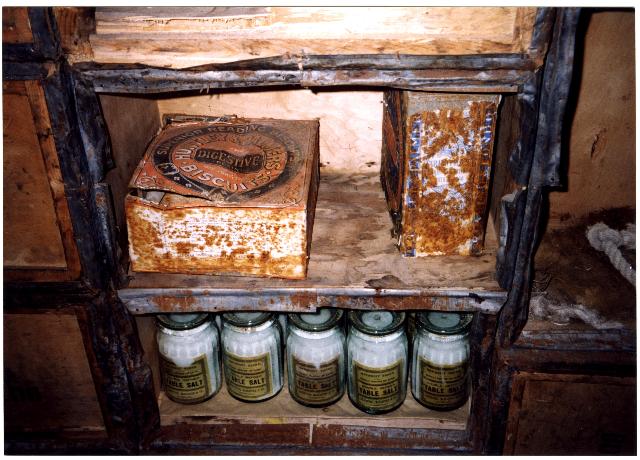In the 19th and early 20th centuries, the world still contained many places unexplored by Europeans. Huntley & Palmers biscuits packed into tins provided an excellent source of food for those adventurers heading off into the unknown. Henry Stanley, for instance, set off to find Dr Livingstone in Central Africa armed with Huntley & Palmers biscuits.
Scott of the Antarctic
Perhaps the most famous explorer amongst Huntley & Palmers clients was Captain Scott. In the early twentieth century reaching the South Pole was the greatest of all challenges left to explorers. Captain Scott left England in 1910, armed with Huntley & Palmers biscuits, some of which had been specially made for the expedition.

In Captain Scott's day the science of nutrition was in its infancy, and modern research has shown that the daily ration of 4100 calories for the men was 800 calories short. The polar party's diet was both vitamin- and energy-deficient (REDMG : 1997.8.1)
Unfortunately for Captain Scott and his companions, a delay to the start of their trip enabled a Norwegian explorer, Roald Amundsen, to gain a head start. On 17 January 1912, half a mile from the South Pole, one of Scott's party spotted a black speck on the horizon. It was a Norwegian flag. Exhausted, the British expedition turned back. Tragically, just 11 miles from the safety of the first food depot, the last three members of the expedition froze to death.

Here, members of the 1911 British Antarctic Expedition are unpacking a sledge of Huntley & Palmers biscuits (REDMG : 1997.8.2)
In the food huts used by Scott, many tins of Huntley & Palmers biscuits were left by him ready for his return. These tins remain there even today in Scott's Hut on Ross Island.

Huntley & Palmers biscuit tins at Scott's Hut in 1999 (REDMG : 2002.164.1)
Captain Scott's biscuits
Captain Scott had biscuits specially made by Huntley & Palmers for the Expedition to the following formula:
Flour 80lb
Rice gluten 13 3/4lb
Wheat meal 20lb
Sugar 7 1/2lb
Lard 2 1/2lb
Salt 10oz
Sodium bicarbonate 2 1/2 oz
Water 40lb
The biscuits were baked to a final water content of 5% and each biscuit weighed 2oz.
Read on to learn about how Huntley & Palmers tins were used and repurposed around the world.





